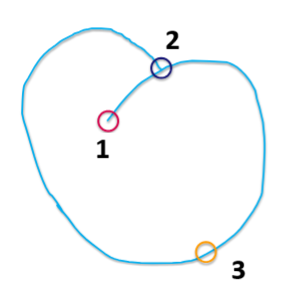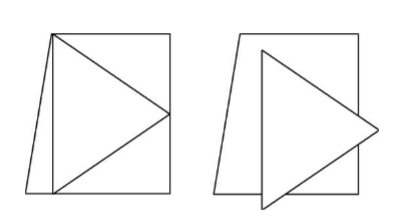Week 5A: Shape perception
1/26
There's no tags or description
Looks like no tags are added yet.
Name | Mastery | Learn | Test | Matching | Spaced |
|---|
No study sessions yet.
27 Terms
Shape perception: Successive processing stages
Local features, 2D, 2.5D, 3D
Who was the inventer of gestalt pscyhology
Max Wertheimer
Gestalt psychology: The whole is more than (…)
the sum of its parts
Five main laws of gestalt psychology
Proximity
Similarity
Closure
Good continuation
Common fates

Gestalt laws: 1,2,3,4,5,6
Proximity, similarity, closure, good continuation, common region, connectedness
Gestalt psychology: Good continuation
Contours that vary smoothly are grouped together (example of 2 horses that look like 1 horse)
Gestalt psychology: Closure
Closed contours are grouped together
Gestalt psychology: Common fate
Things which move together are grouped together
Why do Gestalt laws work
They reflect assumptions about the nature of real-world surfaces and objects.
Link the description of why Gestalt laws work with the 5 laws:
Objects are made of cohesive, opaque, uniform materials
When objects change or move, all their parts change or move
Object contours tend to vary smoothly
Proximity, similarity
Common fate
Good continuation
Three proposed routes to segmentation
Texture-based segmentation (based on FRF processing)
Motion- and depth- based segmentation
Symbolic segmentation

Contour integration: 1, 2, 3
Ending contour
Transverse contour T-junction
Generic contour (fold)
Why do concave elliptic patches never appear on the contour?
Their surface curves inward and never lines up with the viewer’s eye in a way that would make an edge visible.
How does symbolic integration work in the brain
(Such as Marr’s theory) connect basic features into coherent shapes, helping us recognize objects in the scene

Why is the figure on the right not ambiguous in comparison to the left figure in terms of shape recognition
There are only T-junctions instead of 4 way junctions
The Wollaston effect
Perceived gaze direction of a portrait depends not only on the position of the irises but also on the orientation of the head
The Mona Lisa effect
Perceived gaze direction of a portrait remains aimed at the observer despite changes of viewing angle
Object representation: Intrinsic factors
Define the character of a specific object (shape, surfaces, parts)
Object representation: Extrinsic factors
Relate to variation in viewing conditions (position, lighting)
View-independent theories try to (…) extrinsic variation and build a representation that captures the (…) of each object
Remove, intrinsic character
View-dependent theories (…) extrinsic effects into a (…) which represents the object
Combine, class of views
Object representation: Marr and Nishihara
3D generalized cones as part descriptors
Object representation: Biederman
Template matching of shapes/geons
Limitations of view-independent theories
No possibility of fine discriminations
Some object may have several, one or no possible decompositions (Theories have been difficult to implement in computer systems)
Object representation: Ullman
Recognition happens when the shape fits after transformation of stored view
Object representation: Edelman and Duvdevani-Bar
Multidimensional feature space representing the many dimensions along which shapes can vary
Limitations of view-dependent theories
Storage inefficiency and generalization difficulty